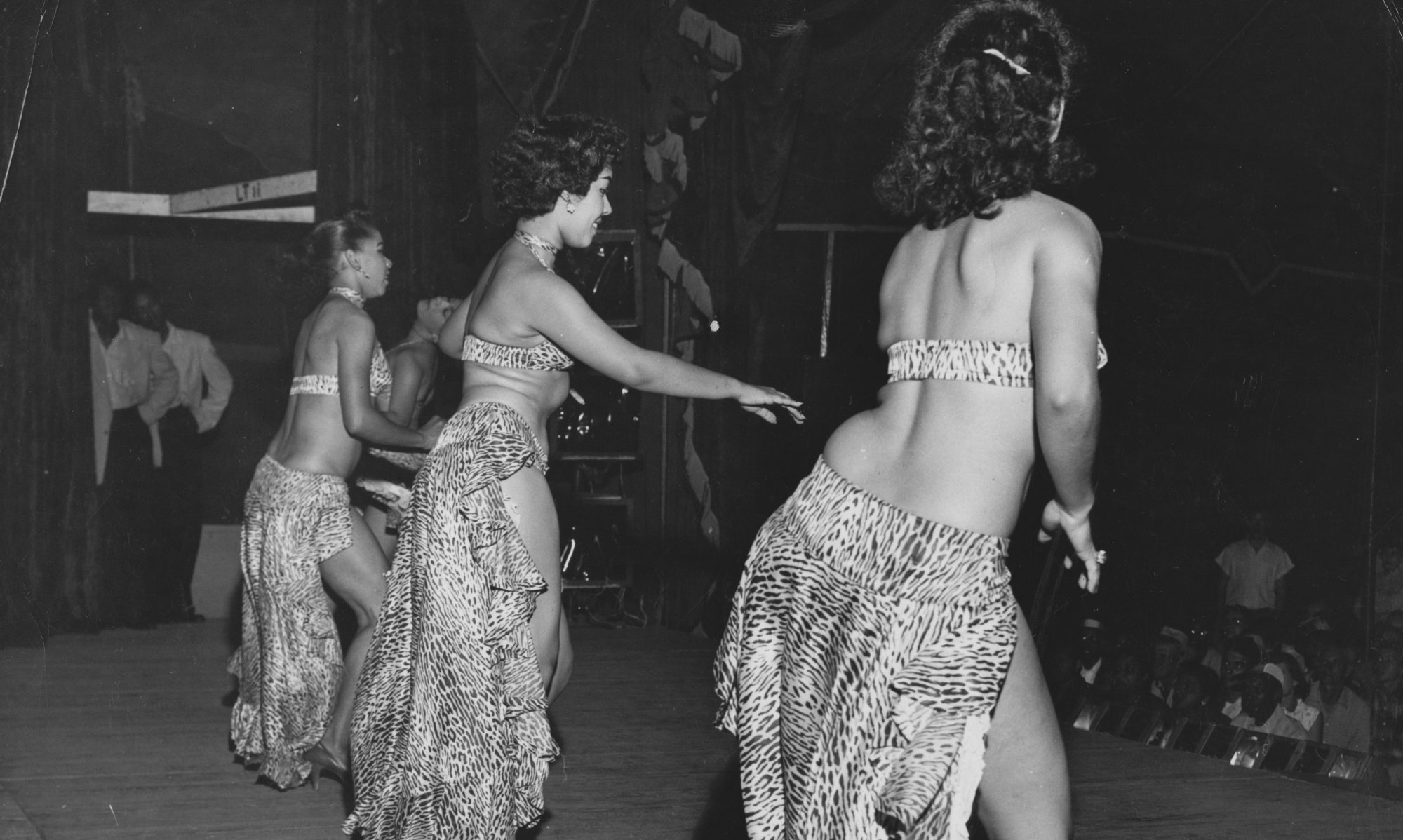- Leon Claxton’s Harlem in Havana Revue was a cultural juggernaut spanning from 1935 to 1967, where entertainment luminaries like Rufus Thomas, Fontella Bass, Redd Foxx, Mercedes Valdés, Micki Lynn, Chuck Berry, Dinah Washington and many more shaped the future of music, dance, and comedy.
- This groundbreaking “All-Colored” burlesque-style midway attraction revolutionized North American carnival history, leaving an indelible mark on the annals of American entertainment.
- A titan among girl show revues in North America, Harlem in Havana stood as a monumental carnival sensation that graced the Royal American Shows midway for over four illustrious decades. Leon Claxton’s Harlem in Havana Revue not only shattered carnival show records but ascended to global acclaim, securing its status as a premier girl show revue on the North American midway.
- Harlem in Havana showcased an array of countless brown-skin showgirls, leaving an indelible mark on the history of black burlesque entertainment. From the trailblazing Bates Sisters, pioneers of exotic, shake and striptease dance in the realm of black burlesque, to the enchanting Cuban Dancing Dolls, who illuminated the Harlem in Havana stage with the rhythms of rumba, salsa, calypso and Latinx burlesque—these extraordinary performers commanded the spotlight. Their artistry unfolded just a tent away from revered American burlesque icons such as Gypsy Rose Lee and Sally Rand, creating an epic convergence of talent that resonated through the annals of theatrical history.
- Beyond a traveling carnival show, Harlem in Havana was a symbol of high art and African American excellence—a lively touring company, a vibrant training ground, and a joyous celebration of talent and rhythm. The wildly popular variety show showcased the infectious beats of blues, jazz, Doo-Wop, early R&B, rock & roll, Latin tunes, and Afro-Cuban music, spreading its influence from the U.S. to Western Canada.
- Notably, Harlem in Havana served as a launchpad for several diverse acts, such as captivating female impersonators Fay Lawrence and Greta Garbage Garland, who contributed to the show’s rich tapestry and birthed “drag” entertainment.
- In the early to mid 20th century, Leon Claxton’s widely acclaimed road show, Harlem in Havana, brought brown-skin talents from across the Caribbean, including Cuba, Jamaica and Haiti, seamlessly integrating their work into the mainstream fabric of America.
- Emerging from the roots of black-face minstrel, Harlem in Havana and similar “Jig shows” played a pivotal role in erasing the tarnished history of the tar mask. These shows not only restored dignity to their stars but also propelled vaudeville and burlesque to unprecedented levels of popularity on the North American midway, creating an entertainment legacy that often goes overlooked.
- Leon Claxton’s’ Harlem in Havana Revue transcended the limitations of its time, achieving mainstream and international acclaim. Its financial success, industry records, and nationwide and international attention solidified its status as one of the finest American midway revues ever presented under canvas.
- In the context of racial segregation during the era of Jim Crow, Harlem in Havana played a pivotal role as a vibrant platform that not only entertained segregated audiences but also reshaped images of Black and Latino identity. The show’s contribution to spreading Afro-Cuban and African American rhythms across the region further emphasized its cultural significance.
- For African American audiences during the Jim Crow era, Harlem in Havana became a source of pride and celebration. It stood out as a rare carnival venue where people of color were welcomed, making it a cultural touchstone on occasions like Negro Day in cities such as Tampa, Memphis, and Little Rock.
- African American road show producer Leon Claxton was a globally recognized and award-winning showman, achieved unparalleled success by producing a groundbreaking multicultural stage show that not only garnered him millions but also secured his indelible place in American history. More than an entertainer, Leon Claxton was a genuine pioneer who rebelled against racial norms, showcasing the brilliance of Black and Cuban performers. His relentless commitment rewrote the fabric of entertainment history, solidifying his status as a transformative force in showbiz. As a visionary genius, Claxton’s international mindset forged alliances in Cuba, setting the stage for a groundbreaking multicultural stage show. His legacy remains a testament to the power of entertainment in challenging social norms and fostering inclusivity. Claxton’s enduring legacy as a showman and innovator earned him countless awards and accolades, including Tampa’s Citizen of the Year Award in 1959.
Contact Leslie to learn more.

